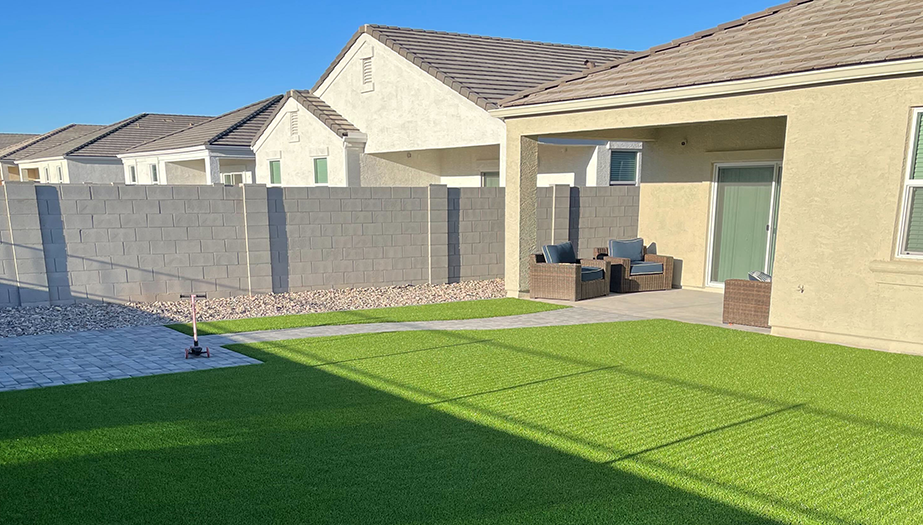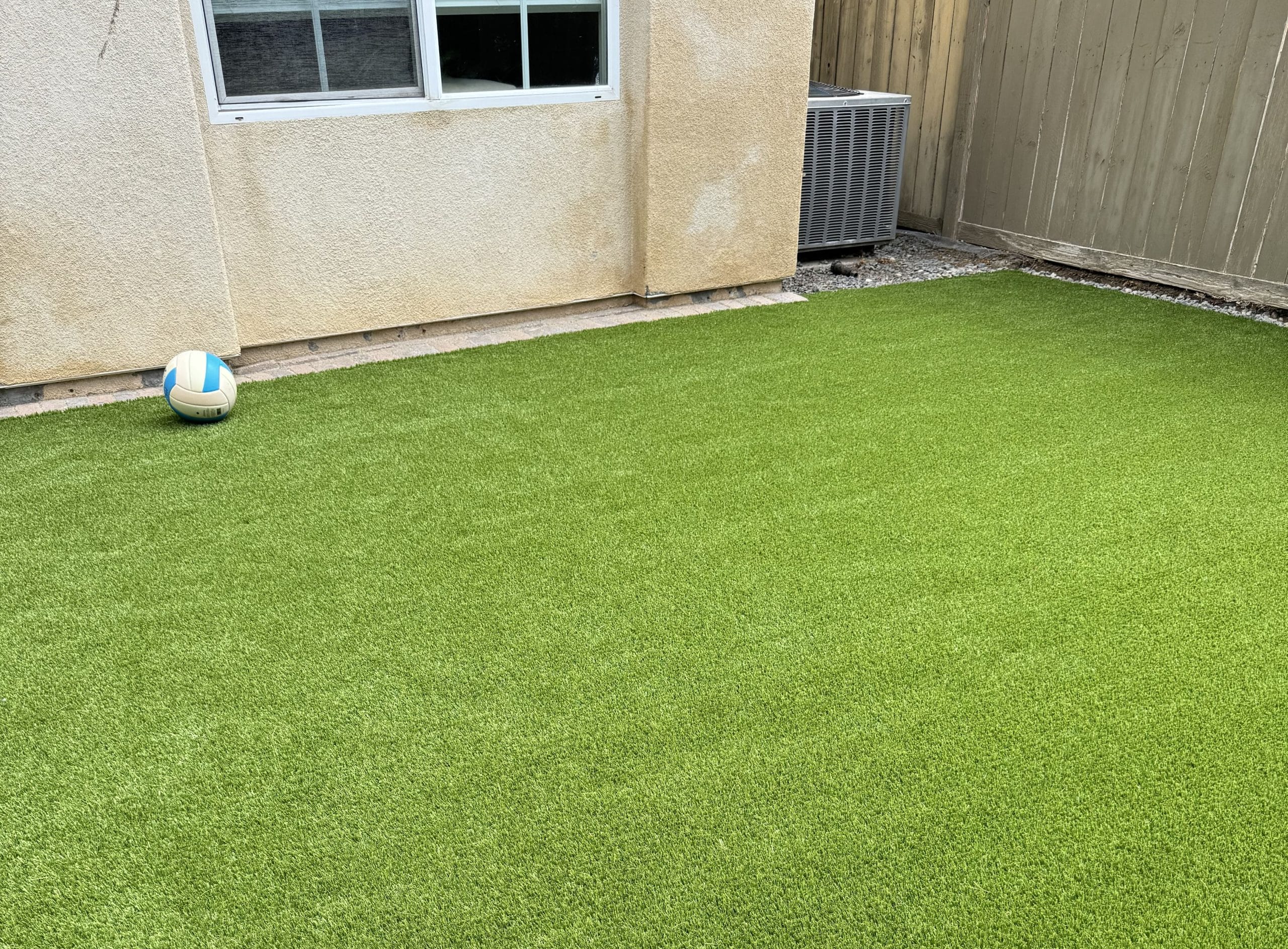Top Reasons to Take Into Consideration Artificial Lawn for a Lush and Low-Maintenance Lawn
As home owners progressively look for lasting solutions for outside spaces, synthetic grass provides an appealing option to standard yards. Its ability to keep a vivid appearance year-round without the worries of watering, chemical, or mowing treatments makes it a sensible selection for those intending to minimize maintenance efforts. The environmental benefits, consisting of substantial water conservation and decreased reliance on pesticides, straighten with modern ecological worths. The advantages extend past mere appearances and sustainability; checking out the complex ramifications of synthetic yard reveals a thorough strategy to lawn management that values deeper consideration.
Year-Round Greenery
One of the most significant advantages of artificial grass is its ability to offer year-round greenery, no matter climate problems. House owners frequently face challenges in maintaining a vivid grass because of seasonal modifications, droughts, or heavy rains. Fabricated yard eliminates these concerns, ensuring a consistently lavish look throughout the year.
This synthetic option is crafted to endure varied climate circumstances, from blistering summertime warm to freezing winter season temperatures. Unlike natural yard, which may brown or come to be irregular during severe conditions, artificial lawn maintains its vibrant shade and structure, enhancing the visual allure of any kind of landscape.
In addition, synthetic grass is immune to pests and illness that typically impact all-natural grass. This strength adds to its enduring appeal, as there is no need for chemical therapies or plant foods that can be unsafe to the atmosphere. Property owners can appreciate the visual advantages of a well-kept grass without the intermittent challenges posed by all-natural yard treatment.
Minimized Upkeep Efforts
Man-made grass substantially decreases upkeep efforts, permitting homeowners to delight in an immaculate grass without the time-consuming tasks related to all-natural grass care. One of the most significant benefits of artificial lawn is the elimination of normal mowing. With no need for a lawnmower, property owners save both time and the expense of upkeep connected with this equipment.

Cleaning synthetic turf is straightforward; an easy rinse with a tube or the occasional brushing to get rid of particles is generally adequate - artificial grass. This simplicity of treatment permits homeowners to invest even more time enjoying their outdoor areas instead of laboring over them. In summary, the decreased upkeep efforts connected with man-made turf make it an appealing choice for those seeking a beautiful, easy backyard
Water Conservation Perks
The considerable reduction in maintenance efforts connected with fabricated yard reaches water preservation, making it an eco-friendly alternative for home owners. Traditional yards need considerable quantities of water to stay rich and lively, often resulting in excessive water usage, especially in deserts. In contrast, fabricated turf gets rid of the requirement for routine watering, substantially lowering the total water usage in your backyard.
By opting for artificial grass, house owners can save countless gallons of water every year. This shift not only advantages private homes however additionally adds to wider environmental campaigns focused on decreasing water waste. In areas experiencing water scarcity, the fostering of synthetic grass can play a significant duty in reducing the effects of dry spell and making sure that important water sources are utilized a lot more successfully.
In addition, the installation of man-made grass can help reduced metropolitan water need, profiting the community overall. With growing recognition of ecological problems, selecting man-made lawn works as a proactive action towards lasting landscape design, assisting to maintain natural water sources while preserving a visually pleasing exterior room (artificial grass). In recap, fabricated yard provides a compelling solution for water preservation, aligning environmental obligation with contemporary landscaping requirements

Parasite and Allergy Decrease
A considerable advantage of mounting synthetic turf is its ability to reduce bugs and irritants in exterior spaces. Conventional turf yards frequently serve as reproducing grounds for insects such as mosquitoes, ticks, and ants, which can develop discomfort and health and wellness risks for pets and families. On the other hand, artificial turf removes the natural material that brings in these parasites, consequently significantly lowering their populations in your lawn.
Moreover, all-natural lawn can nurture mold, plant pollen, and other allergens, which can set off allergies and respiratory system concerns for sensitive individuals. Synthetic lawn provides a cleaner atmosphere, decreasing the potential for allergenic reactions. Unlike natural grass, man-made turf does not produce pollen, making it an exceptional alternative for allergic reaction victims seeking to appreciate their exterior spaces without the danger of flare-ups.
Furthermore, the absence of dirt in synthetic grass means there is less dust and dust, further minimizing air-borne irritants. This low-maintenance choice not just enhances the aesthetic appeal of your lawn yet additionally advertises a much healthier exterior environment, enabling family members to appreciate their lawns without the consistent fear of bugs and allergens. Thus, look here synthetic lawn is a critical selection for those prioritizing comfort and wellness in their outdoor living spaces.
Long-Term Cost Cost Savings
Spending in synthetic grass can lead to significant long-term price savings for home owners. Artificial grass gets rid of the demand for routine grass upkeep costs, such as mowing, fertilizing, and watering.
Moreover, the long life of artificial lawn further enhances its cost-effectiveness. The majority of top quality synthetic grass items can last 15 to 25 years with very little maintenance, decreasing the requirement for substitute or substantial fixings. On the visit the website other hand, natural grass may call for constant reseeding and routine treatment, which can rapidly accumulate in expenses.
Energy savings are an additional important aspect. Homeowners can anticipate to see reduced water costs, as synthetic lawn does not call for watering. Additionally, the reduction in lawn care services can free up beneficial time and sources, permitting house owners to designate their budgets elsewhere.
Final Thought
In summary, man-made grass presents many benefits for house owners seeking a lively and low-maintenance landscape. Its capability to offer year-round greenery, paired with decreased maintenance initiatives and significant water preservation, makes it an attractive selection. Furthermore, the decrease of bugs and irritants adds to a much healthier outside setting. Eventually, the long-lasting expense savings related to synthetic grass strengthen its standing as a functional and lasting service for improving outside areas.
Artificial turf considerably decreases maintenance initiatives, allowing property owners to appreciate a beautiful grass without the taxing tasks associated with all-natural turf treatment.The significant reduction in upkeep initiatives linked with man-made grass prolongs to water conservation, making it an ecologically pleasant option for homeowners. In contrast, fabricated yard gets rid of the demand for regular watering, considerably lowering the overall water consumption in your yard.
In areas experiencing water scarcity, the adoption of fabricated yard can play a significant function in alleviating the effects of dry spell and making certain that useful look at here water sources are made use of more successfully.
With expanding understanding of environmental issues, selecting artificial turf serves as a proactive action towards sustainable landscape design, helping to protect natural water resources while maintaining a cosmetically pleasing outdoor room.